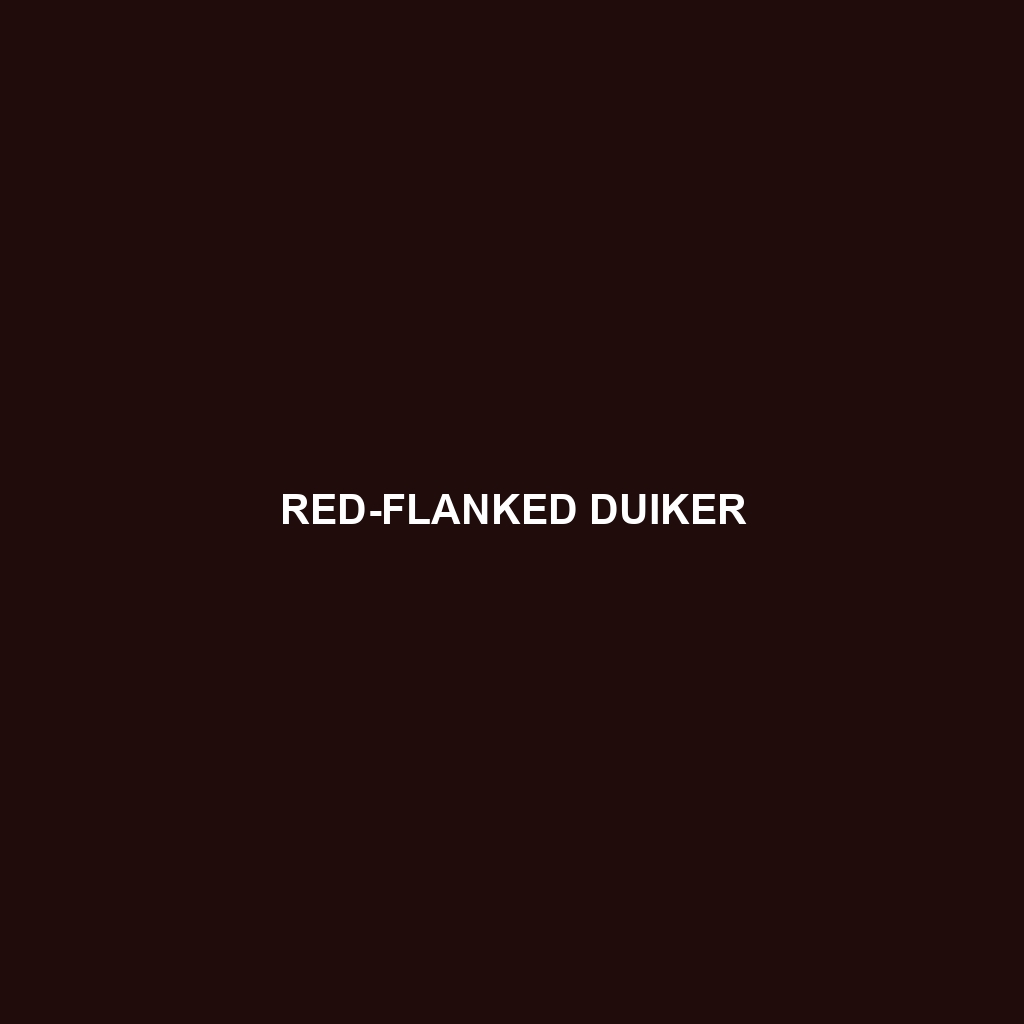Species Description: Rwenzori Red Duiker
Common Name: Rwenzori Red Duiker
Scientific Name: Cephalophus rubidus
Habitat
The Rwenzori Red Duiker is primarily found in the lush montane forests of the Rwenzori Mountains located on the border between Uganda and the Democratic Republic of the Congo. These elusive animals inhabit dense, humid environments characterized by high altitudes (over 2,000 meters) and a diverse range of flora. The species prefers areas with thick bush and undergrowth, which provide optimal cover from predators and a thriving ecosystem.
Physical Characteristics
Standing at approximately 70-90 cm (27-35 inches) in length and weighing between 30-45 kg (66-99 lbs), the Rwenzori Red Duiker is a small to medium-sized antelope. Its coat is a striking reddish-brown color, helping it blend into the forest undergrowth. Notable features include short, slender legs and a slightly arched back, along with distinctive white markings on the face and legs. These adaptations not only aid in camouflage but also enhance its agility in navigating the forest terrain.
Behavior
The Rwenzori Red Duiker is primarily a solitary or small group animal, showing crepuscular behavior; it is most active during dawn and dusk. This species is known for its cautious nature, often remaining hidden in dense vegetation. They are typically shy, relying on their excellent sense of hearing and smell to detect potential threats. Their distinctive vocalizations, ranging from whistles to low grunts, serve various communicative purposes within their social interactions.
Diet
The diet of the Rwenzori Red Duiker mainly consists of leaves, fruits, and herbs found in its forest habitat. This herbivorous animal plays an essential role in seed dispersal, contributing to the health of its ecosystem. Their foraging habits primarily target shrubs and the lower canopy, showcasing their preference for softer foliage. This dietary choice highlights their adaptation to a forest environment, further tying their presence to the ecological balance.
Reproduction
The Rwenzori Red Duiker’s reproductive habits are characterized by a year-round breeding season with peaks influenced by environmental factors. Females typically give birth to a single offspring after a gestation period of about 210 days. The young are hidden in dense vegetation for the first few weeks of life, while mothers return periodically to nurse. This protective strategy enhances the survival chances of the vulnerable young in their natural habitat.
Conservation Status
As of the latest assessments, the Rwenzori Red Duiker is classified as endangered due to habitat loss and hunting pressures. Deforestation for agriculture and infrastructure development poses significant threats to their population. Conservation efforts are crucial to maintaining sustainable habitats and ensuring the species’ continued survival in the wild.
Interesting Facts
One fascinating aspect of the Rwenzori Red Duiker is its unique adaptation to high-altitude habitats, which few grazers can endure. Their elusive nature often makes them a subject of interest among wildlife photographers and researchers. Additionally, they are an important cultural symbol for local communities, representing the rich biodiversity of the Rwenzori region.
Role in Ecosystem
The Rwenzori Red Duiker plays a vital role in its ecosystem by contributing to plant diversity through seed dispersal and maintaining the health of forest undergrowth. As prey for larger predators, they also serve as an essential part of the food web. Their presence indicates a balanced ecosystem, and their conservation is critical for the overall health of the montane forest environment.
This structured HTML description provides a comprehensive overview of the Rwenzori Red Duiker while optimizing for search engines with relevant keywords and ensuring the information is engaging and informative.
